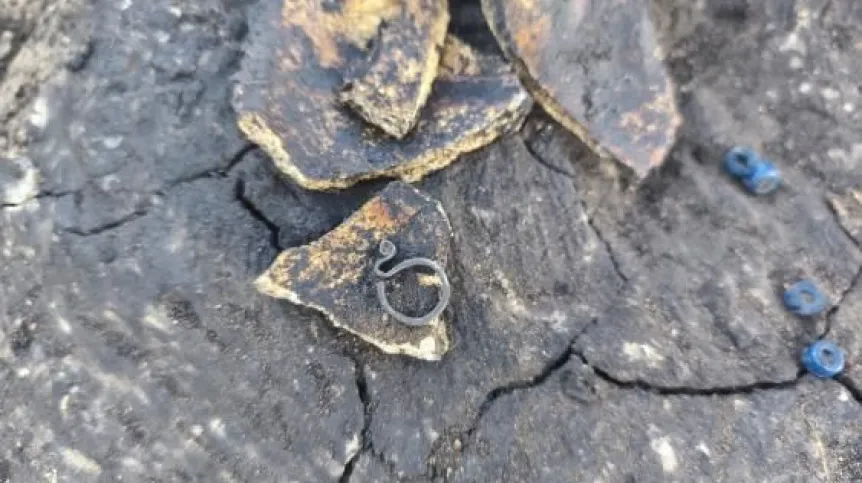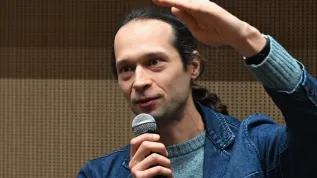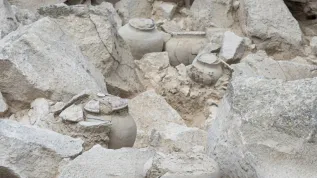
Archaeologists have uncovered a 10th-century cemetery containing the remains of 24 people during gas pipeline construction in Borkowo, Kuyavian-Pomeranian Voivodeship. Researchers believe the burials may belong to the garrison and residents of a nearby early medieval stronghold.
The discovery was made by a team from the Alagierscy Archaeological Workshop during work on the Latkowo–Wrzosy pipeline section. Preliminary analysis of grave goods, including temple rings, knives, arrowheads, and an axe, suggests the site dates to the early Middle Ages.
“We believe that the cemetery contains the burial grounds of the residents and garrison of a nearby stronghold, which, like any stronghold, required protection,” said Dr. Justyna Marchewka-Długońska of Cardinal Stefan Wyszyński University in Warsaw. “We are therefore in an exceptionally advantageous position, allowing us to clearly connect the deceased with the place where they operated during their lifetime, which is not common.”
The skeletons belonged to tall, robust individuals — possibly members of a military unit. “We would not accept a small, rickety, sickly man into a unit tasked with protecting a stronghold,” Marchewka-Długońska said. “They must have been healthy, well-built men who commanded respect. Possibly mercenary warriors.”
Among the finds were beads made of dark blue glass and carnelian, a semi-precious stone with the nearest known sources near Kłodzko and Szklary, and further deposits in Czechia and Romania. “Even assuming the nearest of these sites, we gain important information regarding the stone’s path to its final burial place in the Borkowo area,” she added.
Researchers plan to confirm the dating with radiocarbon analysis. “We are confident that C14 analyses will confirm this preliminary dating,” Marchewka-Długońska said. “The study of the skeletons will allow us to determine not only the sex and age at death, but also parameters such as the presence of palaeopathologies. We already know that one of the deceased had broken ribs that healed during life, and some of them lost their teeth.”
The burial arrangement has puzzled archaeologists. Unlike typical early medieval cemeteries, where graves are laid out in rows, the Borkowo burials appear random. “Perhaps these are burials of people who died shortly before or shortly after the introduction of Christianity?” Marchewka-Długońska said. “The introduction of a new worldview is not a revolution, but an evolution. Perhaps the form of the burials from Borkowo and the fact that they are quite richly equipped reflect this slow shift in worldview.”
The cemetery was partially damaged during construction, and the full extent of the site remains unknown. The area has been heavily cultivated, further complicating preservation.
In August, during construction of the same pipeline, archaeologists uncovered another burial in the region containing the remains of a man, a woman, and two children, believed with 90 percent certainty to date back to the Mesolithic period.
PAP - Science in Poland, Ewelina Krajczyńska-Wujec (PAP)
ekr/ agt/ lm/
tr. RL
Gallery (5 images)
-
 1/5Cluster of temple rings. Credit: Katarzyna Alagierska
1/5Cluster of temple rings. Credit: Katarzyna Alagierska -
 2/5A skull, possibly destroyed by ploughing. The deceased were buried so that the head was several centimeters higher than the skeleton. Credit: Katarzyna Alagierska
2/5A skull, possibly destroyed by ploughing. The deceased were buried so that the head was several centimeters higher than the skeleton. Credit: Katarzyna Alagierska -
 3/5Similar to photo 1, but these are two different graves. Credit: Katarzyna Alagierska
3/5Similar to photo 1, but these are two different graves. Credit: Katarzyna Alagierska -
 4/5Temple ring and glass beads. Credit: Katarzyna Alagierska
4/5Temple ring and glass beads. Credit: Katarzyna Alagierska -
 5/5Orange carnelian beads, a blue glass bead, and the object on the left is a temple ring. Credit: Katarzyna Alagierska
5/5Orange carnelian beads, a blue glass bead, and the object on the left is a temple ring. Credit: Katarzyna Alagierska













